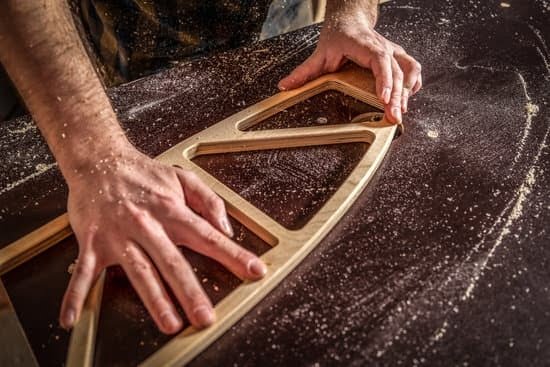Why are wood joints used in woodwork? Wood joints are essential in creating strong and durable wooden constructions. In this article, we will explore the history, types, and advantages of using wood joints in woodworking. From their functional importance to their aesthetic appeal, wood joints play a significant role in enhancing the beauty and functionality of wooden pieces.
Wood joinery has a rich history that spans centuries, with various techniques evolving over time. Understanding the origins and evolution of wood joinery provides valuable insight into its significance in woodworking. We will delve into the history of wood joints to appreciate the craftsmanship and ingenuity behind these time-honored techniques.
Exploring different types of wood joints, such as butt joints, dovetail joints, and mortise and tenon joints, reveals the diverse range of options available for connecting wooden pieces. Each type offers unique strengths and considerations, contributing to the artistry and structural integrity of woodworking projects.
History of Wood Joints
Woodworking has a rich history that dates back to ancient civilizations, where wood joinery techniques were already being used to create functional and intricate wooden pieces. The evolution of wood joints can be traced back to early human societies, where the necessity for sturdy and durable wooden constructions drove the development of various joinery methods. From simple butt joints to complex dovetail and mortise and tenon joints, the history of wood joints reflects the ingenuity and craftsmanship of generations past.
Throughout history, different cultures around the world have contributed to the development and refinement of wood joinery techniques. In ancient Egypt, for example, intricate wooden furniture found in tombs showcased advanced joinery methods that demonstrated the skill and expertise of their craftsmen. Similarly, Chinese woodworking traditions introduced unique joinery techniques such as tongue and groove joints, showcasing precision and attention to detail.
The evolution of wood joinery techniques continued through the Middle Ages and into the modern era, with advancements in tools and technology leading to the development of new joint designs and construction methods. As woodworking practices spread across continents, different regions began to incorporate their own traditional joinery styles, resulting in a diverse array of wood joint techniques that are still used today.
This rich historical background not only highlights the importance of wood joints in woodworking but also underscores their cultural significance in various societies around the world.
Types of Wood Joints
Wood joints play a crucial role in woodworking, as they are essential for connecting and securing different pieces of wood together. There are various types of wood joints utilized in woodworking, each with its own unique characteristics and applications. Understanding the different types of wood joints is important for creating sturdy, functional, and visually appealing wooden constructions.
Some common types of wood joints used in woodworking include:
1. Butt Joints: A simple yet versatile type of joint where two pieces of wood are joined together at their ends. This joint is often used in simple woodworking projects and can be reinforced with the use of glue or nails.
2. Dovetail Joints: Known for their strength and resistance to pulling forces, dovetail joints are created by interlocking trapezoidal-shaped “pins” and “tails”. This type of joint is commonly used in cabinet making and creating drawers due to its durability.
3. Mortise and Tenon Joints: This classic joint consists of a protruding tenon on one piece fitting into a mortise (hole) on the other piece. It is widely used in furniture making and traditional timber framing due to its stability and ability to withstand weight and movement.
Wood joints are used in woodworking for several reasons, including:
Understanding the different types of wood joints allows woodworkers to choose the most suitable joint for their specific project requirements, whether it’s creating furniture, building structures, or crafting decorative wooden items. Each type of joint has its own advantages and considerations based on factors such as the type of wood being used, the intended purpose of the construction, and design preferences.
Strength and Durability
Wood joints play a crucial role in enhancing the strength and durability of wooden constructions. By properly connecting different pieces of wood, these joints provide structural integrity and stability to the overall assembly. This section will delve into the significance of using wood joints for ensuring the robustness and longevity of woodworking projects.
Enhancing Structural Integrity
One of the primary reasons why wood joints are used in woodworking is to enhance the structural integrity of wooden constructions. Different types of joints, such as mortise and tenon, dovetail, and finger joints, provide strong connections between individual pieces of wood, preventing them from separating or collapsing under various forces. This is particularly important in furniture making, cabinetry, and construction where durability is essential for long-term use.
Preventing Warping and Distortion
Another reason for utilizing wood joints is to prevent warping and distortion in wooden structures. When boards are simply glued or nailed together without proper joint reinforcement, they are more prone to shifting, bending, or twisting over time. However, with well-crafted wood joints, the connections are secured and stabilized, reducing the likelihood of warping and ensuring that the overall structure maintains its original shape.
Longevity and Endurance
The use of wood joints also contributes to the longevity and endurance of wooden constructions. By creating strong and durable connections between parts, these joints help extend the lifespan of woodworking projects. Whether it’s a sturdy bed frame or a resilient door frame, incorporating quality wood joints can significantly increase the durability of the finished piece. Additionally, proper joint techniques can also minimize wear and tear caused by frequent use or external factors.
In summary, utilizing wood joints is critical for enhancing the strength and durability of wooden constructions by providing structural integrity, preventing warping and distortion, as well as increasing longevity and endurance. These aspects underscore the importance of mastering different joinery techniques in woodworking to create high-quality and long-lasting wooden pieces.
Aesthetic Appeal
Wood joints play a crucial role in enhancing the aesthetic appeal of woodwork, showcasing the artistry and craftsmanship involved in woodworking projects. The seamless integration of different types of wood joints can elevate a simple piece of furniture or wooden structure into a work of art, highlighting the skill and precision of the woodworker.
Whether it’s the intricate design of dovetail joints or the clean lines of a mortise and tenon joint, these woodworking techniques add visual interest and character to wooden pieces, making them stand out as unique and beautiful creations.
One of the main reasons why wood joints contribute to the aesthetic appeal of woodwork is their ability to create visually striking designs. With careful planning and execution, woodworkers can use different types of joints to create patterns, textures, and shapes that add artistic flair to their projects. For example, herringbone patterns in parquetry flooring or intricate interlocking designs in joinery can serve as eye-catching focal points in any woodworking creation.
Furthermore, the craftsmanship involved in creating well-executed wood joints adds to the overall visual appeal of a wooden piece. The precise cutting, fitting, and assembly required for different types of wood joints demonstrate skilled workmanship and attention to detail. This meticulous approach not only enhances the appearance of the final product but also signals quality construction that is sure to be admired for its beauty.
Lastly, the variety of wood joints available allows for creative expression in woodworking. From exposed joinery that becomes a decorative element in furniture design to hidden joinery that maintains a sleek and seamless appearance, woodworkers have numerous options for incorporating both functional and visually pleasing elements into their work.
| Aesthetic Appeal Factors | Description |
|---|---|
| Artistic Flair | Enhanced by intricate designs created with different types of wood joints. |
| Craftsmanship | Demonstrates skilled workmanship through precise cutting and fitting. |
| Creative Expression | Provides options for incorporating both functional and visually appealing elements into woodworking projects. |
Functional Considerations
Wood joints are a fundamental aspect of woodworking, serving both functional and aesthetic purposes. Understanding the practical reasons for using wood joints is crucial in creating sturdy and durable wooden pieces that stand the test of time.
Enhanced Stability and Strength
One of the primary reasons why wood joints are used in woodworking is to enhance the stability and strength of the furniture or structure being constructed. By interlocking different pieces of wood using techniques such as mortise and tenon joints or dovetail joints, the resulting connection is much stronger than simply butting two pieces of wood together. This increased stability ensures that the wooden piece can withstand pressure, weight, and other external forces, making it suitable for long-term use.
Prevention of Wood Movement
Another important functional consideration for using wood joints is to prevent wood movement. Wood has a natural tendency to expand and contract with changes in humidity and temperature. By utilizing appropriate wood joint techniques, such as allowing for movement in certain types of joints like frame-and-panel constructions, woodworkers can prevent issues such as warping, splitting, or loosening of connections over time.
Customization and Adaptability
Furthermore, wood joints allow for customization and adaptability in woodworking projects. Different types of wood joinery techniques offer flexibility in design and construction, enabling craftsmen to create unique and tailored pieces according to specific project requirements. Whether it’s a simple butt joint for basic constructions or intricate dovetail joints for decorative elements, wood joinery provides versatility in meeting diverse functional needs.
Understanding these practical reasons for using wood joints in creating functional and sturdy wooden pieces underscores their importance in woodworking while highlighting their significant impact on the quality and longevity of wooden constructions.
Common Applications
Wood joints are used in a wide range of woodworking projects, from furniture making to construction, due to their ability to provide strength and stability to wooden structures. In furniture making, wood joints are crucial for ensuring that the pieces can withstand the rigors of daily use.
Without properly constructed joints, furniture would be prone to wobbling and breaking under pressure. Additionally, in construction, wood joints play a vital role in connecting structural components such as beams, trusses, and frames, contributing to the overall stability and safety of buildings.
One of the most common applications of wood joints in woodworking is in the creation of cabinets and drawers. Dovetail joints, known for their interlocking design that provides both strength and visual appeal, are often used in cabinetry to join sides to fronts. The sturdy nature of dovetail joints makes them ideal for holding heavy loads, making them a popular choice for storage units like cabinets and drawers.
Another common application of wood joints is in the construction of doors and windows. Mortise and tenon joints are frequently used to connect door frames or window frames with their respective panels. These types of joints provide excellent support and durability, ensuring that doors and windows can withstand constant opening and closing without weakening over time.
Additionally, wood joints are also widely utilized in the construction of wooden bridges. Because bridges are subject to heavy loads and constant traffic, it is crucial that the structural components are securely connected. Wood joinery techniques such as lap joints or half-lap joints are often employed in bridge construction to create strong connections between beams or trusses.
Overall, wood joints are an essential element in woodworking due to their ability to enhance the strength and durability of wooden structures while also contributing to their aesthetic appeal. Whether it’s for furniture making or construction purposes, the practical advantages provided by wood joinery make it an indispensable aspect of woodworking projects.
| Common Applications | Wood Joints |
|---|---|
| Cabinets & Drawers | Dovetail Joints |
| Doors & Windows | Mortise and Tenon Joints |
| Wooden Bridges | Lap Joints or Half-Lap Joints |
Advantages and Disadvantages
Woodworking involves the use of various techniques to join pieces of wood together, and one of the most fundamental elements of this craft is the use of wood joints. Wood joints are used in woodworking for several reasons, including aesthetic appeal, functional considerations, and practical purposes. Understanding the advantages and disadvantages of using wood joints can help woodworkers make informed decisions when choosing the best joining method for their projects.
One of the primary advantages of using wood joints in woodworking is the enhanced strength and durability they provide to wooden constructions. Different types of wood joints have unique characteristics that allow them to distribute weight and pressure evenly, creating sturdy and long-lasting structures. Additionally, certain wood joints, such as mortise and tenon joints, also provide a larger gluing surface area, resulting in a stronger bond between the joined pieces.
On the other hand, one potential disadvantage of using wood joints is that they often require precise measurements and careful execution to ensure a proper fit. This level of precision can be challenging for inexperienced woodworkers or those working with intricate designs. Additionally, some types of wood joints may require more time and effort to create compared to simpler joining methods like using screws or nails.
Furthermore, when considering different types of wood for woodworking projects, it is essential to take into account how each type will interact with specific wood joint techniques. For example, hardwoods like oak or maple may be better suited for complex joinery due to their strength and density, while softer woods like pine may require additional reinforcement or different jointing methods to achieve similar levels of stability.
Additionally, project requirements such as weight-bearing capacity or flexibility will also influence the choice of wood joint used in woodworking.
Conclusion
In conclusion, wood joints play a crucial role in woodworking, offering not only functional benefits but also contributing to the aesthetic appeal of wooden pieces. Throughout history, wood joinery techniques have evolved and adapted to meet the changing needs and preferences of craftsmen and woodworkers. From simple butt joints to intricate dovetail joints and mortise and tenon joints, there is a wide variety of options available for creating strong, durable, and visually appealing wooden constructions.
The use of wood joints enhances the overall strength and stability of wooden pieces, ensuring that they can withstand the test of time. Additionally, the artistry and craftsmanship involved in creating seamless wood joints add an undeniable charm to woodworking projects, making them stand out as unique and thoughtfully constructed pieces. Whether for furniture making or construction purposes, wood joints are essential for ensuring that wooden structures are not only functional but also visually pleasing.
In considering the advantages and disadvantages of using wood joints in woodworking, it becomes evident that their benefits far outweigh any potential drawbacks. While it may require skill and precision to execute certain types of wood joints effectively, the resulting quality and longevity of the finished piece make it well worth the effort. Overall, wood joints are an indispensable part of woodworking, contributing to the creation of high-quality wooden pieces that are both structurally sound and visually striking.
So when asking why are wood joints used in woodwork? The answer lies in their ability to elevate craftsmanship while ensuring durability and functionality.

Hi everyone! I’m a woodworker and blogger, and this is my woodworking blog. In my blog, I share tips and tricks for woodworkers of all skill levels, as well as project ideas that you can try yourself.





